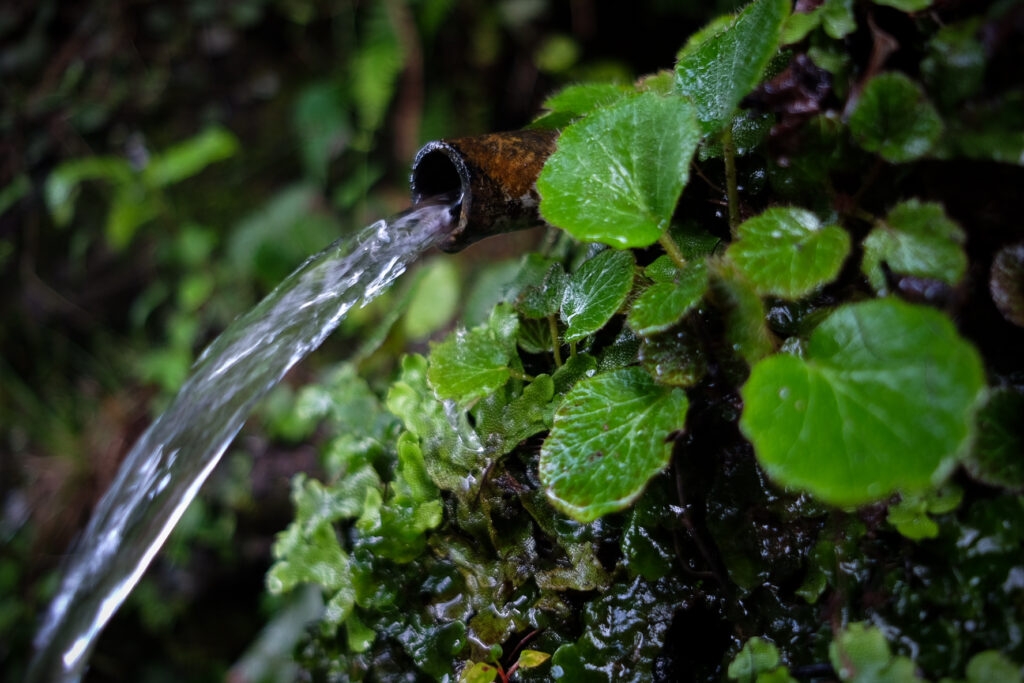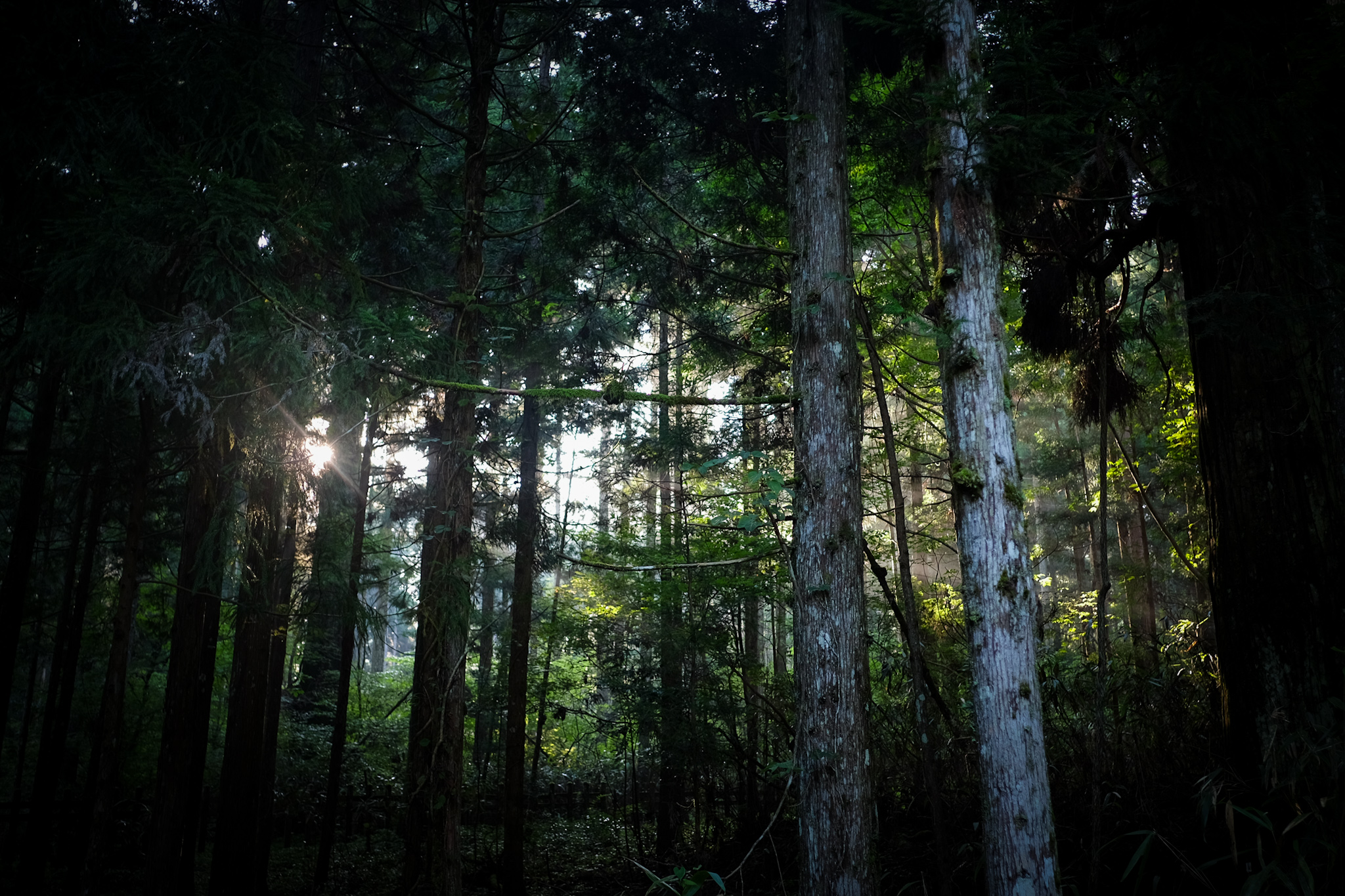words by and photos by Monzour Buendia Umali
Summertime in Japan is not too different in the Philippines. The season is marked by the sound of crickets singing in chorus and scent of lush trees, all running to play with one’s senses. In terms of geography, these two countries share interesting commonalities with the fact that both are archipelagic and endowed with green and diverse forests, perfect for a modestly known therapeutic activity called ‘forest bathing.’ Shinrin-yoku as it is known in Japanese, provides a literal translation of ‘forest’ and ‘bath.’ But the concept practically tells one to bathe rather in the forest atmosphere, take in the fresh air that helps clear out the senses. Rising into popularity in the 1980s in the field of nature or eco- therapy, such practice of simple excursion to greeneries is believed by some up to this day to be beneficial physiologically and psychologically. I am one of those who subscribed to the idea – to take a pause, look around, and find my grounding. It is interesting that it takes truly little to avail a healthy dialogue with my inner being. And while practicing so, it does well to my mind and body. Summertime hits once every year, and it would always remind me of a time I went to forest-bathe in Japan, my second time alone in a foreign country. It was the time I met a beast in Wakayama.
In the middle of August 2019, I climbed the third longest known trail to Mount Koya (“Koyasan”) in Wakayama, Japan. I started at eight in the morning, alighting at a ridiculously small and old mountainside train station. My jump-off was unusual to the sight of a 72-year-old obāchan (whom I spoke with through my one-hour train ride), since just like her, tourists would commute until the last stop and ride the cable car going up. My chosen trail started with a paved mountain village road. It was an incredibly quiet way with nobody along walking or hanging out by their houses or crop farms. It did not feel suspicious. At least four vehicles passed down the road in a two-hour preliminary walk.


The calming sounds of streams and springs, raptors and woodpeckers, bees and dragonflies prevailed. Pine-fresh air would occasionally blow to dry up my sweat. Come midpoint, I sat to snack out at an intersection of a village road and a mountain highway. There were vehicle lay-by areas, a convenience store and vendo machines. A few minutes later, my online map would suggest me to take the same route of the highway. I resumed by tracing the edge of an asphalt road lit under the sultry weather. As I stopped to put on my sunglasses, a mid-aged man (mailman perhaps) stopped his car and approached me to say something. It was in Nihongo but still comprehensible, especially when he mentioned the word “abunai” (dangerous) and then drew a line across the lush mountains pointing to the peak. The kind man was apparently concerned that I might get hit by a car on a sudden curve. Grateful for his thoughtfulness, I continued by taking the better path into the sacred mountain. It was another two hours of hike into the beautiful pine forests, which Koyasan is known for. My water was running out and my head would sometimes feel lighter. My vision would get more blurred, worsening my myopia. I could not count the times I talked to myself, hum a chillaxing tune, nor the number of spiderwebs I ruined passing by. I would get scared easily by sudden scratches or noises and imagine forms of humans from cut logs. I would assume some eyes in the dark are watching me, or even a ghost of a once brave samurai to flash from any corners. The lair of fear was there, but I was empowered by the feat that I was about to make in the course I am taking alone. No footprints. Nobody else behind or ahead of me. It was only me, myself, and my bizarre goal to finish whatever I had started.
In some walks, I would write poems in my head. If I could correctly remember some words my brain played with amid lightheadedness, a line would go like this: “Three century-old logs fallen along the way, your dream is always bigger than what you are.” The sound coming from a highway resonated to me below a carved ridge, and I knew I was about to finish my four-hour bout. But what surprised me the most was a strange board I had to find only there. Who would have guessed what? A signage prohibiting solo hikers and prevent bear attacks was posted at the very end of the trail. To my tired being, it felt confusing. I was laughing at myself. But more than anything, I was grateful to be coming out there safely and all right in the physical.
I stepped on the edge of a peculiar glory, on a quiet highway where a great Buddhist gate is standing to greet and welcome successful finishers like me. Simply, in my heart and mind was the thought that I overcame a beast inside me.
To me, it was one of the most special forest bathing stories I could tell my future grandchildren. Once upon a time, I conquered my fear in a sacred mountain in Japan.

Editor’s Note:
Like a grain of sand in an hourglass, your mind unabatedly saunters by against the slow passing of time. You remember that one proverb you found online, supposedly originating from Japan, pointing out how human beings have three faces they carry within their lifetime. The first face is the one you show to the world, the second is what you show to your close friends and family, the third is the face you never show to anyone.
While slowly traversing the mountain, aiming for the peak, you bask beneath the sunlight passing through the leaves of the trees — komorebi that’s what they call it. Stopping by to feel the searing embrace of the sun, surrendering your thoughts to the other worldly, you found yourself transmuting to a form you’ve kept hidden for a while.
You showed your third face, accepting the flaws and the cracks. Finally, you’ve learned to accept the imperfections and impermanence, fully transformed, fluttering under the open sky.
You’ve conquered the beast you’ve defeated through the night.
– Ramon Garilao, JFM Program Coordinator for Film







